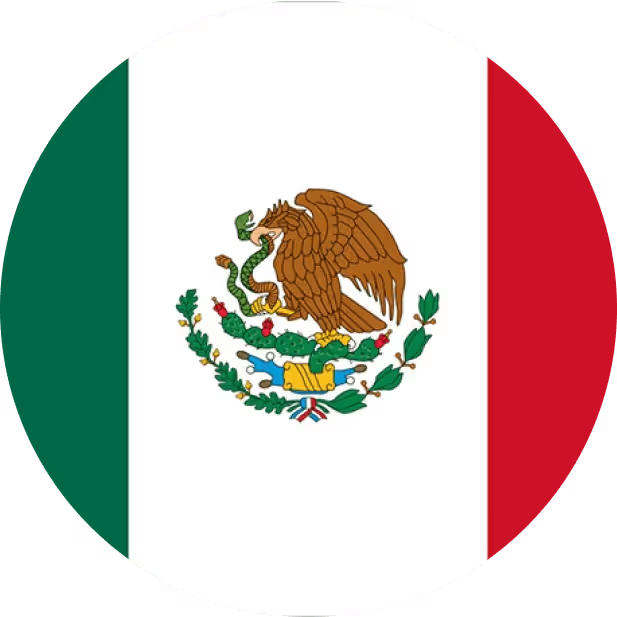What is Knowledge Management?
Knowledge Management (KM) refers to the processes used to manage and direct all the knowledge within an organization. It is rooted in an understanding of knowledge itself, which includes both tangible and intangible skills that individuals possess.
KM recognizes two main types of knowledge:
- Explicit Knowledge: This includes knowledge or skills that can be easily articulated, understood, and transferred to others. Also referred to as formal or codified knowledge, it encompasses anything that can be documented, such as manuals, instructions, and formulas.
- Tacit Knowledge: This type of knowledge is difficult to express, organize, or teach. It includes innate skills like body language, creative thinking, or aesthetic judgment.
A third category—implicit knowledge—refers to knowledge that has not yet been documented or shared but could be taught. This differs from tacit knowledge, which is much harder, if not impossible, to codify. For the purpose of this article, we’ll focus mainly on explicit and tacit knowledge.
Categories of Knowledge
These knowledge types can be further broken down into four categories:
- Factual Knowledge: Measurable, observable, and verifiable data
- Conceptual Knowledge: Perspectives and systems-based thinking
- Expectational Knowledge: Based on expectations, assumptions, or judgments
- Methodological Knowledge: Related to decision-making and problem-solving
Why Knowledge Management Matters?
Knowledge Management empowers organizational learning, an idea where organizations are put not just in the dependable, master generation of an item or administration, however in the information that underlies these creation forms. Organizations committed to hierarchical learning are keen on keeping up and expanding upon inward information at an authoritative level - helping people gather uncommon abilities, yet guaranteeing that this information is accessible to and scattered all through the workforce.
As one Massachusetts Institute of Technology (MIT) paper states, the core goal of knowledge management is to connect “knowledge nodes” - those with knowledge and those seeking knowledge - to ultimately increase the knowledge within an organization. Within that goal, the authors identify four objectives of KM: to capture knowledge, to increase knowledge access, to enhance the knowledge environment, and to manage knowledge as an asset.
Eventually, knowledge management is an integrated system of accumulating, storing, and sharing knowledge within a team or organization. KM consists of several components, as well as strategies to implement it successfully - we’ll delve deeper into these later in the article.
Who Uses Knowledge Management?
Knowledge management can be implemented organization-wide across a number of industries. However, the way you implement KM might change depending on factors such as industry and company size.
KM is often used differently for small vs. large organizations, however. Small (and/or young) companies must carve out a competitive market advantage early on, and therefore benefit from KM by codifying and storing internal knowledge from the get-go. Large organizations - even those with unwavering strength in their market - use KM to act quickly in the digital age, where business changes constantly and often without warning. Without a reliable system to store existing knowledge and accumulate new knowledge, it would be difficult to react to these market changes. However, both large and small companies can benefit from KM because it treats the knowledge that every individual brings as an asset, so employees feel respected for their skills in the workplace.
For those hoping to actualize information the board in a particular office, you can likewise tailor the training to sub-fields. Other than big business KM, information the executives is most usually actualized in IT/data frameworks and science, hierarchical administration, business organization, HR the board, content administration, or for individual use.
How Does Knowledge Management Work?
Basic Components, Strategies, and Theoretical Foundations
At its core, knowledge management (KM) is based on the belief that the most informed and skillful workforce leads to better, faster, and more consistent business decisions. To build and sustain such a workforce, organizations must actively stimulate organizational learning, ensuring that both explicit (codified) and tacit (experiential) knowledge is continuously captured, shared, and enhanced.
By implementing a robust knowledge management strategy, organizations not only preserve critical insights but also promote a culture of ongoing development. KM ensures that knowledge is not trapped in silos—isolated within teams or individuals—but is distributed evenly, empowering every employee to contribute and learn from one another.
Three Foundational Approaches to Knowledge Management
As first explored by Ikujiro Nonaka and Hirotaka Takeuchi, there are three main theoretical approaches to implementing knowledge management, each emphasizing a different area of focus within the organization:
1. People-Centric Approach
Also known as ecological knowledge management, this approach revolves around human interaction. It focuses on:
- Building learning communities
- Promoting informal knowledge exchange
- Encouraging mentorship and peer-to-peer learning
This method views knowledge as something that grows through relationships and social networks within the workplace.
2. Technology-Centric Approach
This model prioritises the technological infrastructure used to:
- Store, codify, and retrieve knowledge
- Facilitate knowledge sharing via knowledge bases, intranets, AI chatbots, and cloud-based KM platforms
Organizations using this approach focus on creating robust systems that allow seamless knowledge transfer.
3. Process-Centric Approach
This approach centers on organizational processes and structure, ensuring that the way a company functions naturally supports knowledge flow. This includes:
- Streamlined production processes
- Clear organizational hierarchy
- A culture that incentivizes knowledge sharing
Companies adopting this strategy integrate KM directly into their operations, making it part of how work gets done daily.
📌 Note: The ideal approach depends on factors like your organizational structure, leadership style, workplace culture, and existing workflows. However, regardless of which model you adopt, effective KM strategies ultimately touch all three dimensions: people, technology, and processes.
Common Knowledge Management Strategies in Practice
Beyond theory, most companies employ tactical KM strategies to manage how knowledge is stored, accessed, and applied. Here are the most widely used:
1. Storing Knowledge vs. Sharing Knowledge
- Storing involves accumulating, codifying, and securely maintaining information in a digital repository or knowledge base.
- Sharing takes it further—creating structured systems (like learning platforms, discussion forums, or peer-led sessions) to actively disseminate that knowledge across the organization.
A successful KM framework must go beyond storage to enable easy and timely access to what’s stored.
2. Codification vs. Personalization
- Codification is the process of documenting knowledge—such as developing content databases, SOP libraries, FAQs, and searchable internal wikis. It also includes the architecture and tagging systems that support content discoverability.
- Personalization focuses on connecting people to knowledge. This includes encouraging group collaboration, creating mentorship programs, organizing live knowledge-sharing sessions, or nurturing learning communities.
Both strategies are complementary: codification ensures information is recorded, while personalization ensures it's truly absorbed and applied.
3. Push vs. Pull Strategy
- A push strategy involves individuals or teams proactively uploading and documenting their knowledge into the system for others to access.
- A pull strategy flips the model—employees reach out to subject matter experts when they need specific knowledge, enabling on-demand, context-relevant knowledge transfer.
Choosing between push and pull depends on your team dynamics and digital maturity, but most successful KM frameworks include a hybrid of both.
4. The SECI Model: The Cornerstone of KM Theory
The SECI Model (Socialization, Externalization, Combination, and Internalization), also proposed by Nonaka and Takeuchi in 1996, remains one of the most widely adopted frameworks for understanding knowledge transfer. Here's a breakdown of the model’s four knowledge conversion modes:
This model highlights how knowledge continuously evolves within an organization and why both human and technical processes are critical.
5. Data Mining in Knowledge Management
With comprehensive KM implementation, organizations often accumulate vast knowledge libraries. To make sense of this information at scale, many turn to data mining—the use of algorithmic tools to detect patterns, trends, and gaps in knowledge repositories.
While qualitative insights still play a key role in KM, automated data mining tools:
- Use machine learning to recognize frequently accessed documents
- Identify underutilized knowledge areas
- Suggest content updates or highlight emerging topics
This enhances the efficiency and relevance of your KM system, making it smarter over time.
Why is Knowledge Management important?
Knowledge management comes in many different forms. One great example of an effective—yet simple—practice comes from Geisinger Medical Group. After developing checklists for doctors to use when conducting surgeries, the cost of surgery declined $2,000 per patient, and patients experienced fewer complications after surgery.
But simple checklists just won’t cut it for the breadth and depth of knowledge that exists in most organizations. Robust solutions for knowledge management include:
- Cross-training programs – Mentoring, shadowing, and other training programs allow employees to gain business knowledge by watching others work. For example, new employees at Toyota shadow experienced employees for months, and new factories are initially staffed by experienced workers from existing factories as well as new hires.
- Document management systems – Document management systems like Google Drive and Box allow organizations to store company documents on the cloud, share them, and control access permissions at a granular level. Typically, these tools have systems for tagging files and adding metadata that make information easier to find.
- Content management systems (CMSs) – Content management systems like SharePoint and Bloomfire allow teams and individuals to publish, update, and access information on a company intranet.
- Social networking tools – Private social networking tools like Workplace by Facebook and Slack allow teams to communicate and collaborate in a shared space. But these tools also double as knowledge management systems because they store all historical conversations, allowing employees to search for previously-discussed information.
- Chatbots – We believe chatbots represent the natural evolution of knowledge management. Chatbots like Engati use AI and machine learning to respond to employee questions and requests for information. Using chatbots, employees don’t have to wonder who to ask or where to go for information they need. They don’t have to go digging around in a CMS, document system, or chat history. They can use pose natural-language questions (“How do I add a new baby to my insurance?”) and the chatbot will surface the best information from its knowledge base, regardless of where that info lives in the organization.
What are the key benefits of knowledge management in an organization?
Effective knowledge management reduces operational costs and improves productivity because it provides seven key benefits:
- Spend less time recreating existing knowledge- When information is easy to access and accurate, it reduces the need for coworkers to interrupt each other with emails, chats, and support tickets. Employees and especially support teams spend less time answering repetitive questions, freeing them up to focus on more important—and more profitable—work.
- Get the information you need sooner (and with fewer headaches)- If you’ve ever sent an email asking for information only to have that email forwarded multiple times to different people who might know the answer, you know how unproductive it is when finding information feels like playing a game of whack-a-mole.
- Make fewer mistakes- The old adage “history repeats itself” is as true in business as it is in all other aspects of life. When employees aren’t sharing information, they’re doomed to repeat the same mistakes others have already made. But this is avoidable when the lessons-learned from mistakes and failures are easily accessible to everyone.
- Make informed decisions-When employees share their experiences, lessons-learned, and research on a searchable knowledge system, others can access and review that information in order to consider multiple pieces of data and differing viewpoints before making decisions.
- Standardize processes- If you’ve ever played the telephone game, you know exactly how distorted information gets when communicated by word-of-mouth and in silos. With documented and shared processes, it’s easy to make sure that everyone is on the same page and following approved procedures.
- Provide better service to employees and customers-Effective knowledge management allows support teams to resolve employee and customer requests quickly and correctly. Employees are able to stay happy and productive, and customers place more trust in the company, which makes them more likely to purchase.
What Are the Biggest Barriers to Knowledge Management?
“Knowledge is power” — but too often, people treat it as personal power, hoarding information instead of sharing it. However, knowledge sharing is just as powerful: it creates empowered, informed, and collaborative teams.
Effective knowledge management requires breaking past the following common barriers:
1. Knowledge Hoarding for Personal Gain
Some individuals withhold information because they believe it gives them influence. This mindset prevents team-wide learning. Organizations must reinforce that sharing knowledge strengthens teams, not weakens individuals.
2. Empire Building vs. Relationship Building
People often focus on building their own “empires” — teams, systems, or roles — and avoid sharing with others. Shifting this mindset means encouraging cross-functional collaboration and relationship-building instead of isolated silos.
3. The Lone Worker Bias
Many employees still believe, “I have to solve this by myself.” This individualistic approach can hold back innovation. A cultural shift toward teamwork and collaborative problem-solving is essential to break this barrier.
4. Local Focus Over Network Thinking
When people focus only on their local team or region, it limits knowledge sharing across the organization. This can be overcome by building communities of practice that connect roles, departments, and geographies.
5. “Not Invented Here” Syndrome
Some teams resist ideas that originated elsewhere, especially when trust is lacking. Without a culture of openness, new knowledge is dismissed. Creating face-to-face opportunities for sharing and building trust helps mitigate this.
6. Fear of Penalty for Mistakes
Employees often avoid sharing mistakes or lessons from failure out of fear of being blamed. KM thrives in environments where learning from mistakes is encouraged. Tools like retrospectives can shift the focus from failure to insight.
7. “Not Paid to Share” Mentality
When knowledge sharing isn’t recognized as a part of the job, people see it as non-essential. Many believe, “I’m not paid to share.” Organizations must treat knowledge as a business asset and make its preservation a part of daily operations.
8. No Time to Share
This is perhaps the most realistic challenge—employees are busy. However, not sharing knowledge creates inefficiencies that waste even more time. We must make knowledge sharing quick, integrated, and efficient. In truth, we have no time not to share.
By addressing these barriers head-on—with the right culture, tools, and leadership—organizations can unlock the true power of their collective knowledge.
💼 How Knowledge Management Supports HR
Knowledge management isn’t just an IT function—it’s an HR enabler. Here’s how:
Conclusion
In a world where information overload is real, knowledge management is not just a “nice-to-have” — it’s a strategic necessity. Whether you're onboarding new hires, streamlining HR operations, or scaling your organization, a strong KM system ensures that your people have access to the right insights at the right time.
By capturing institutional memory, promoting collaboration, and enabling informed decision-making, knowledge management lays the groundwork for innovation and resilience. And when seamlessly integrated into your HR systems — like with peopleHum — it becomes a silent driver of productivity, compliance, and employee satisfaction.
🚀 Ready to Empower Your Workforce with Smart Knowledge Management?
Start building a connected, informed, and agile organization today.
👉 Book a free demo with peopleHum
✅ FAQs: Knowledge Management
1. Why is knowledge management important for businesses?
Knowledge management helps organizations retain critical insights, reduce repeated mistakes, and improve decision-making by ensuring the right information is accessible when needed.
2. What are the key benefits of a knowledge management system?
A KM system boosts productivity, supports employee training, enhances collaboration, and safeguards knowledge when employees leave.
3. How does knowledge management impact employee performance?
By giving employees quick access to best practices and resources, KM reduces time spent searching for answers and helps them perform tasks more efficiently.
4. What’s the difference between tacit and explicit knowledge?
Tacit knowledge is experience-based and hard to document (like skills or intuition), while explicit knowledge is formal and easy to share (like manuals or guides).
5. Can KM help with remote or hybrid teams?
Yes, KM systems ensure remote teams have equal access to company knowledge, enabling consistency, faster onboarding, and better collaboration across locations.
6. How does peopleHum support knowledge management?
peopleHum integrates document repositories, chatbots, and learning modules to help businesses store, manage, and share knowledge seamlessly within one platform.














































.avif)